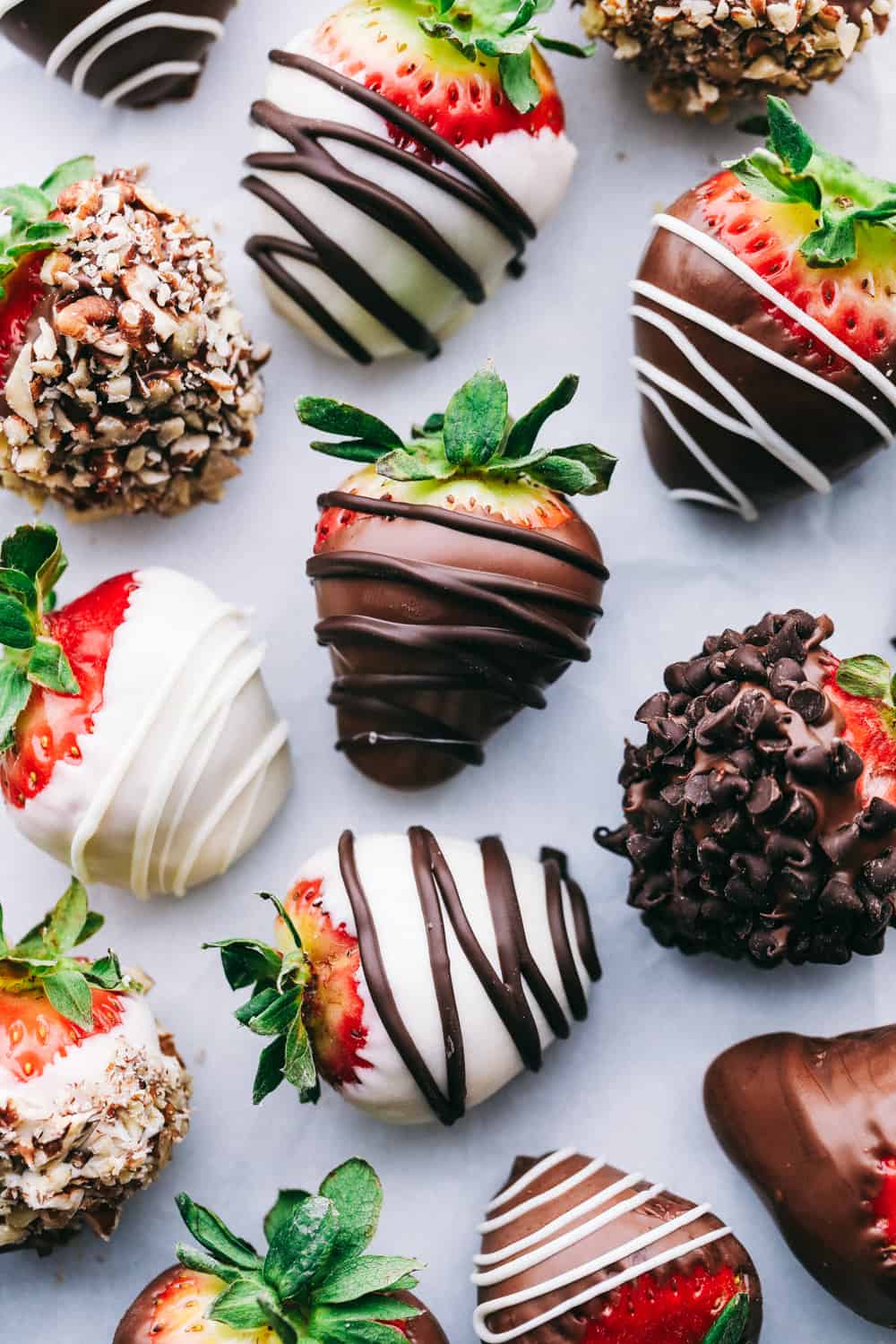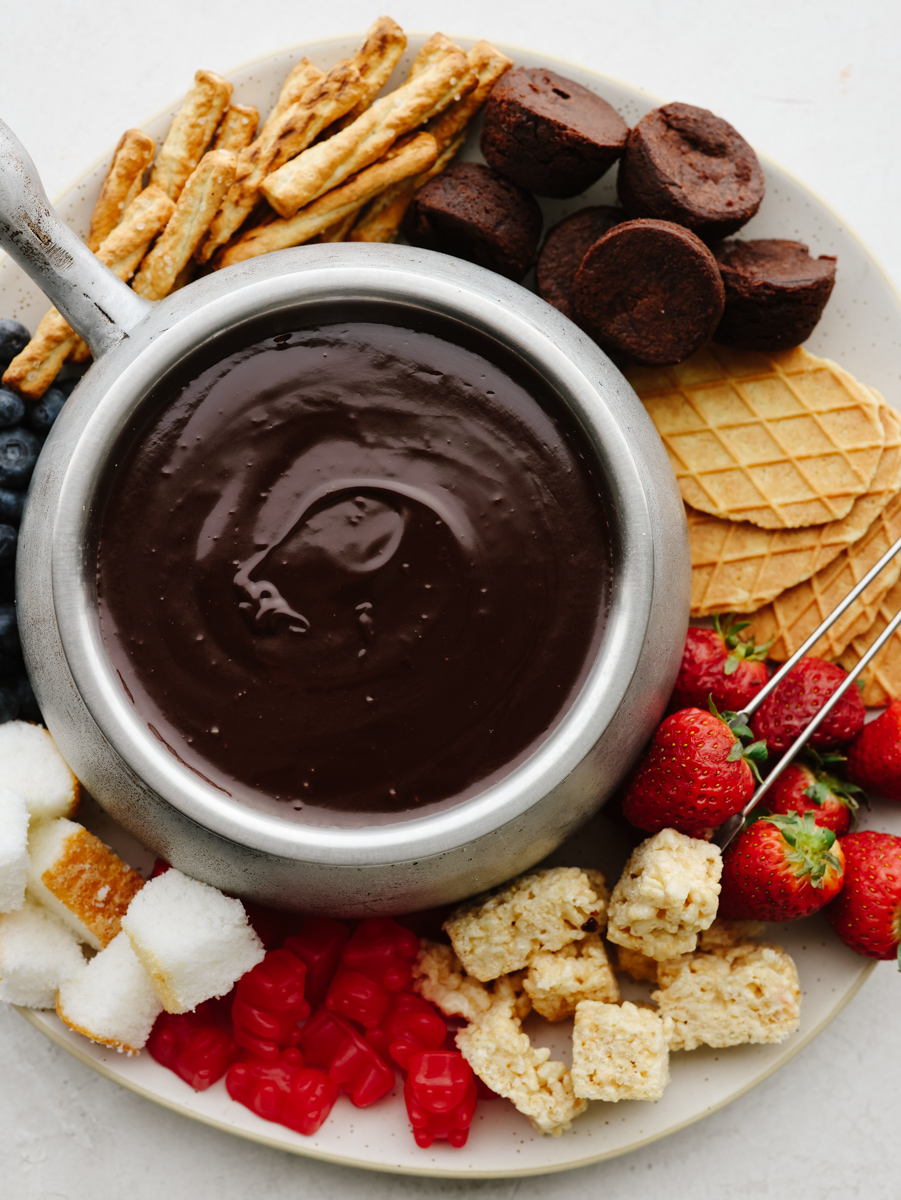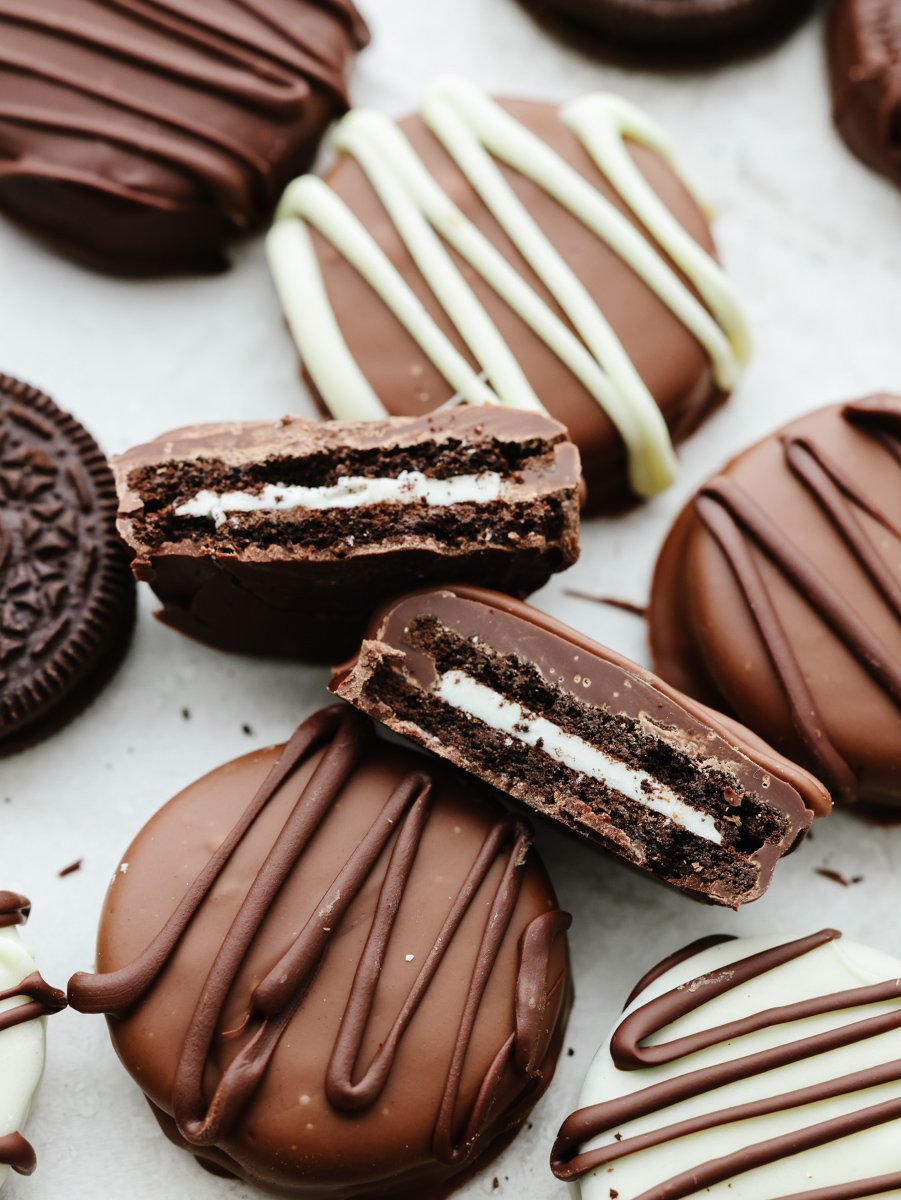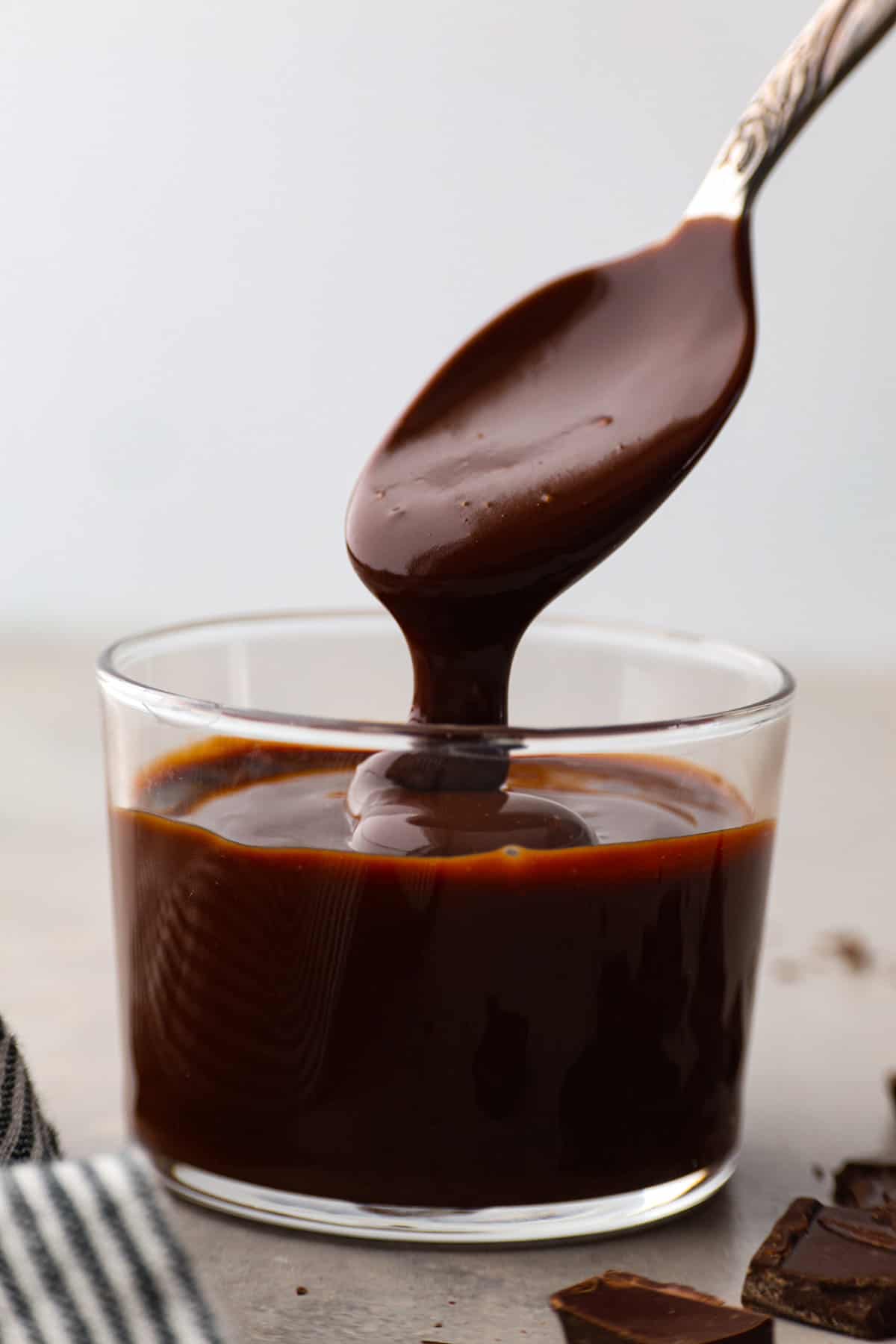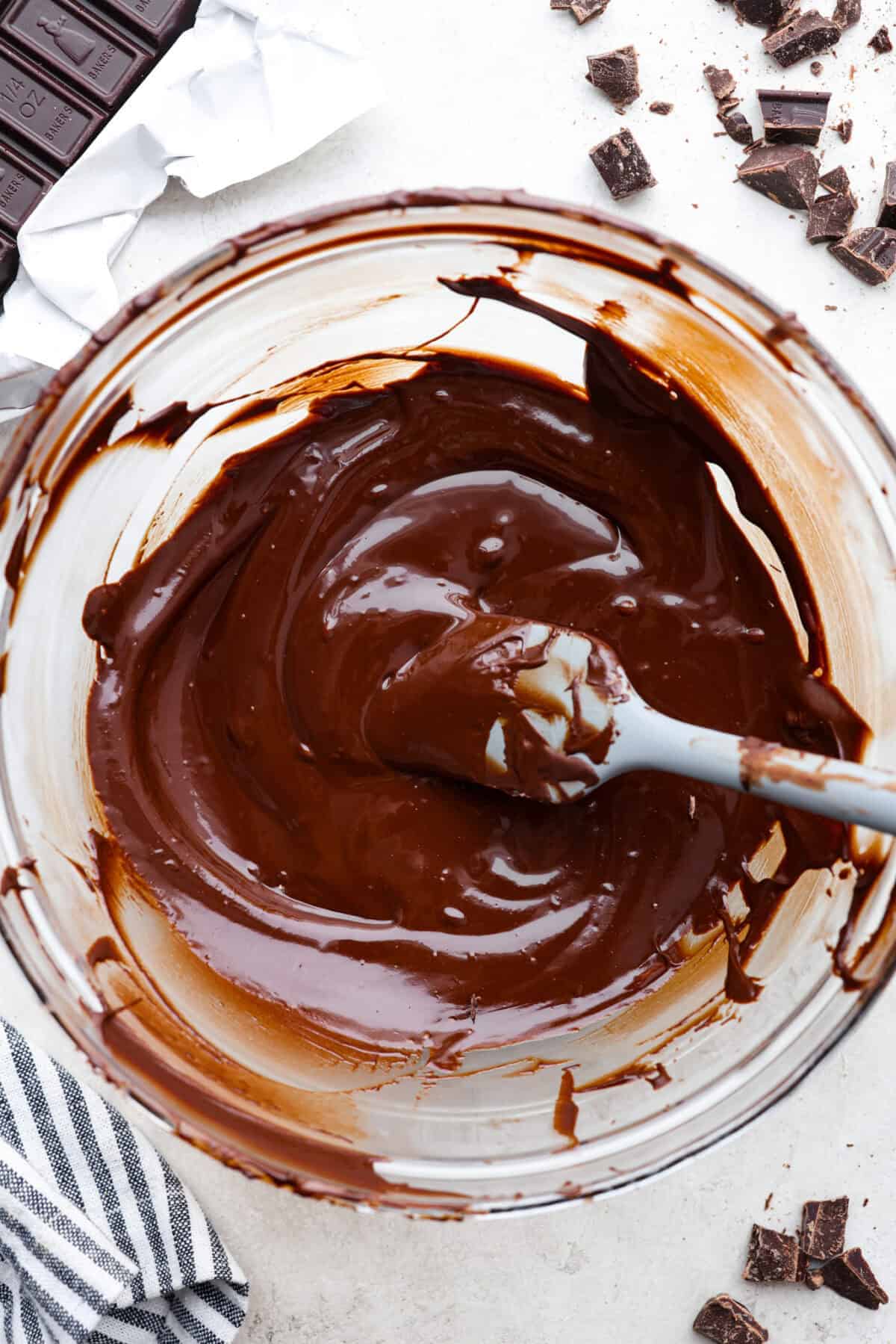
Learn how to temper chocolate for all your chocolate dipping and candy-making needs! Tempering chocolate can be intimidating but my how-to guide will help you every step of the way.
Use tempered chocolate to make decadent treats! It’s perfect for dipping these peanut butter eggs, my easy Oreo balls, or making chocolate-covered pretzels. Your chocolate lovers will thank you!
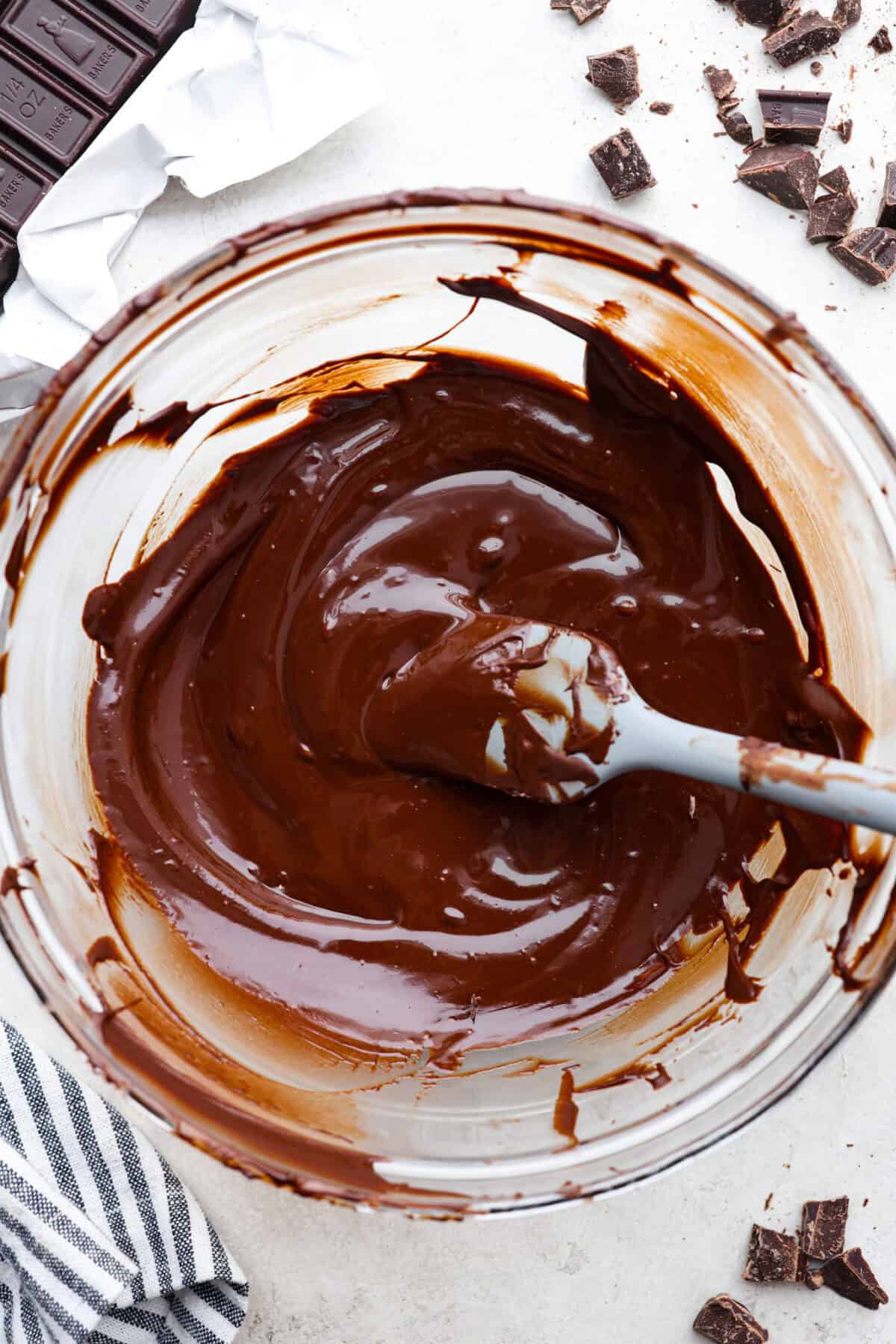
Reasons to Temper Chocolate
- Use For Desserts: Tempered chocolate is used when making chocolate molds and bars, dipped candy, or edible chocolate decorations.
- Perfect Coating Texture: Get smooth, shiny, and “snappy” chocolate for all your dipping needs! Tempering is necessary for that perfect chocolate texture.
What Does it Mean to Temper Chocolate?
Tempering chocolate is the precise process of heating and cooling chocolate. Basically, it’s melting the chocolate and then cooling the chocolate so that it hardens to the perfect texture. This texture should be smooth, shiny, and hard enough to “snap” when broken apart. Tempered chocolate will hold its shape at room temperature and is important for dipping and making chocolate candies.
Chocolate can be sensitive to temperature changes causing it to go out of temper. Once out of temper, the chocolate becomes dull, grainy, and soft. You have likely seen chocolate that has gray or white streaks on it. This is called “chocolate bloom” and indicates that the chocolate is out of temper. While the chocolate is perfectly edible, it’s not the same as tempered chocolate.
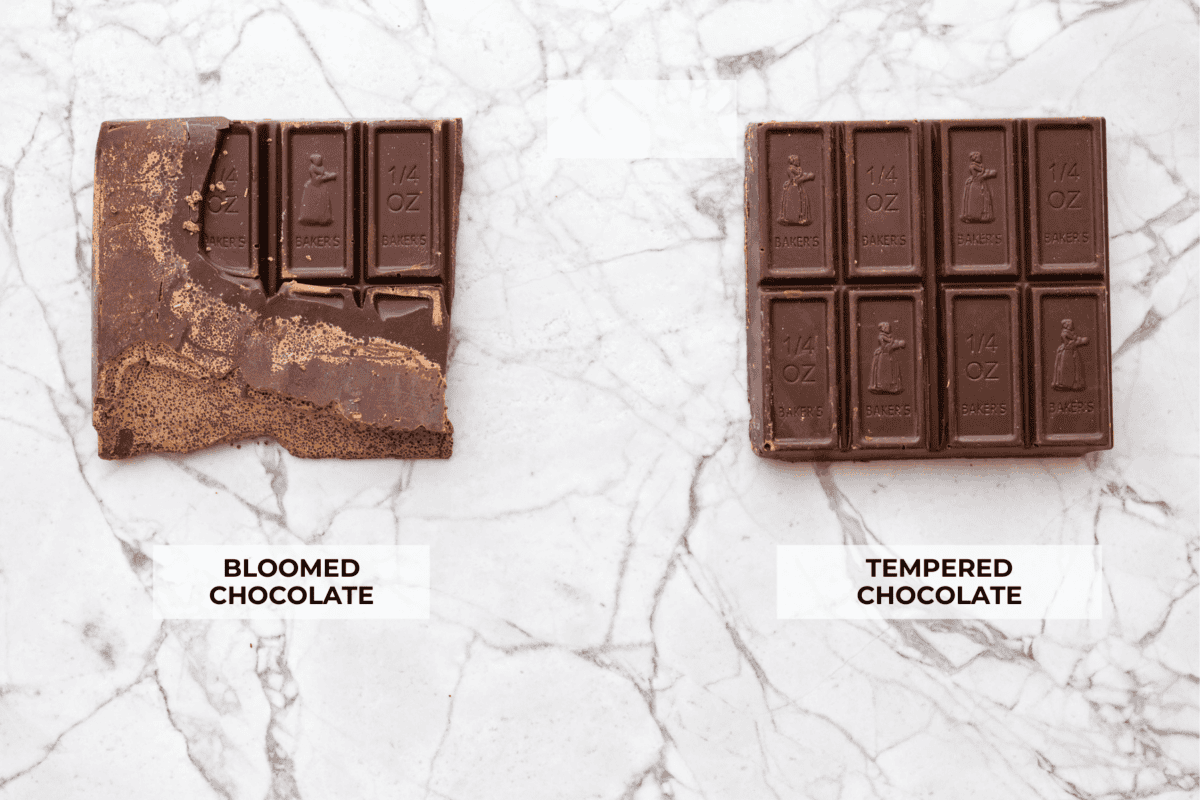
How to Temper Chocolate
There are three different ways to temper chocolate! Choose which method you would like to use.
- Double Boiler: The double boiler method is when a glass or metal bowl is placed on top of a pot of steaming (not boiling or simmering) water to melt the chocolate. Once melted, the heated bowl of chocolate is removed and set in a bowl of cold water or ice to cool the chocolate down to the second temperature. Once cooled to the right temperature, the bowl is then placed back on the double boiler. This warms the chocolate up slightly to reach the final temperature for tempered chocolate.
- Seeding: The seeding method is similar to the double boiler method. You will use a double boiler to melt the chopped chocolate. Remove the bowl from the heat and stir in the remaining ⅓ of chopped chocolate. This is called “seeding”. The chocolate is stirred until completely melted and has reached the second temperature. Place the bowl back on the double boiler for just a few moments until the chocolate has reached the final temperature and is in temper. If the chocolate is under the final temperature, continue stirring on the double boiler until it has warmed properly. If the chocolate goes over the final temperature, the tempering process will need to begin again and you will need additional chopped chocolate to seed with.
- Tabling: The tabling method uses a double boiler to melt the chocolate. Pour ⅔ of the melted chocolate onto a clean marble surface. Use a plastic bench scrape to spread the chocolate out into a large rectangle before gathering it back into a pool in the center of the marble. Repeat this 3-4 times before taking the temperature of the pool of chocolate. If it has reached the second temperature, scoop it all up and add it back to the bowl. If it has not reached the second temperature, continue to spread it out and gather it into a pool 1-2 times more before temping again. After you’ve added the cooled chocolate back to the bowl, stir it in with the remaining ⅓ of chocolate and temp it. If it is still warmer than the final temperature, remove ⅔ of it from the marble to spread and cool it 2-3 times before adding it back to the bowl. If it is cooler than the final temperature, place it on the double boiler for only a few seconds while stirring to bring it up the few degrees necessary to reach the final temperature.
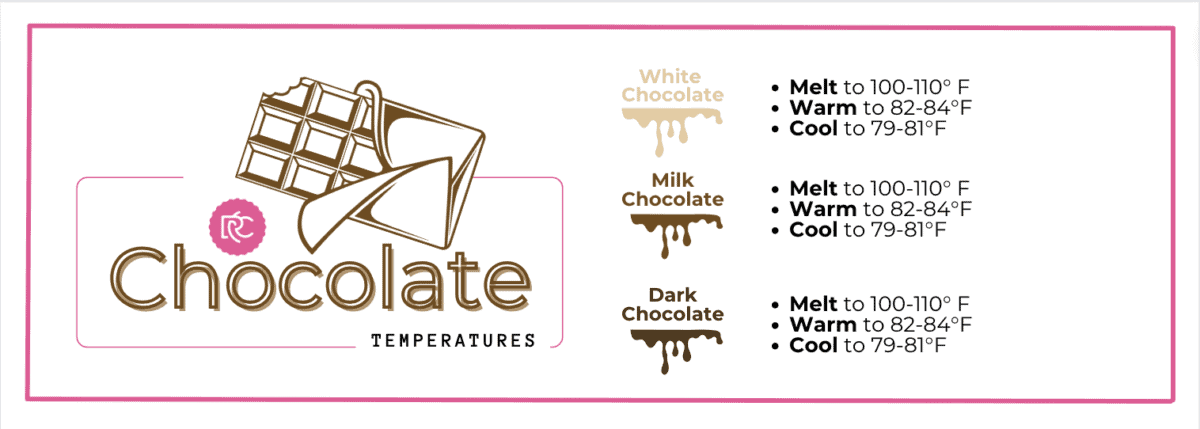
How to Make a Double Boiler
Knowing how to make a double boiler is helpful because it’s an important part of all 3 methods. You can buy a double boiler pot, but this is an easy version using a pot and bowl you most likely already have!
- Pour Water Into the Pot: Use about 1 inch of water when using the double boiler method. The bottom of the bowl should not touch the water in the pot!
- Place the Bowl on Top of the Pot: The bowl should be large enough to cover the top of the pot and sit on top of it, but not too large that it doesn’t sit well on top of it.
- Add the Chocolate to the Bowl: Turn on the stove on low heat and slowly heat to melt the chocolate. Be patient and stir continuously, scraping down the sides and bottom of the bowl to keep all of the chocolate moving.
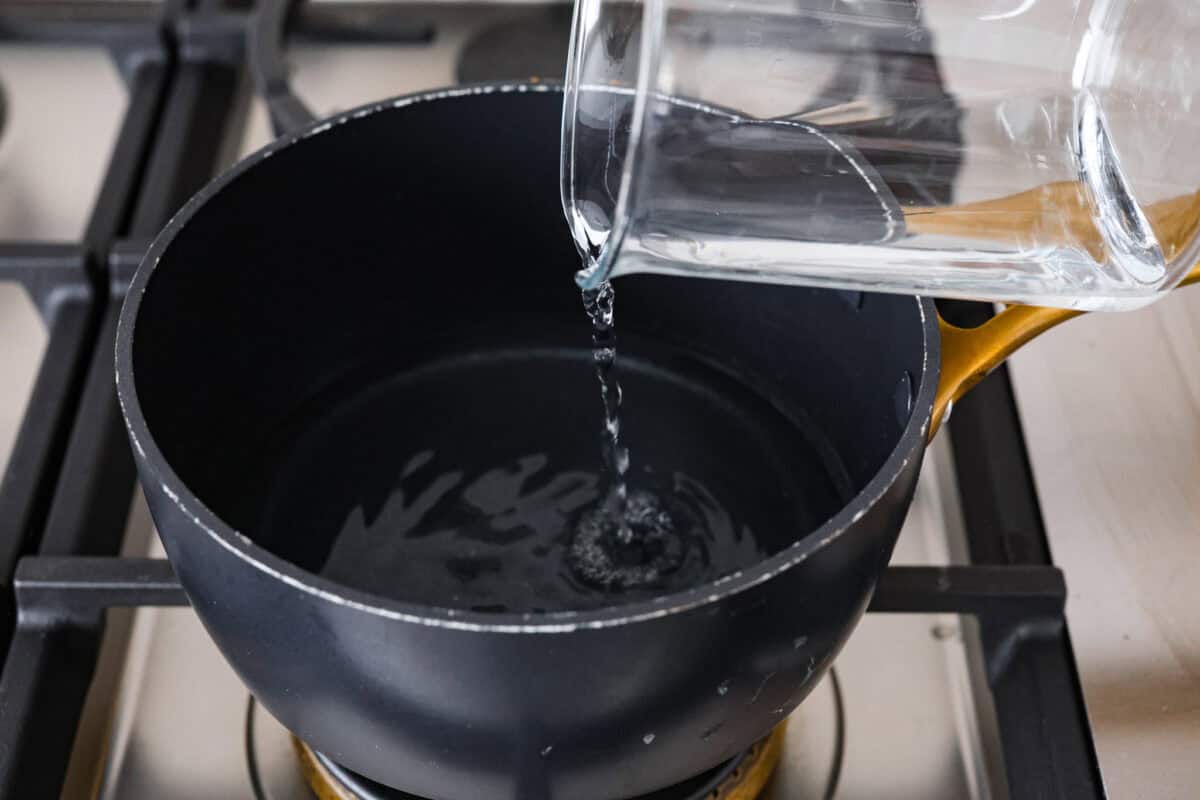
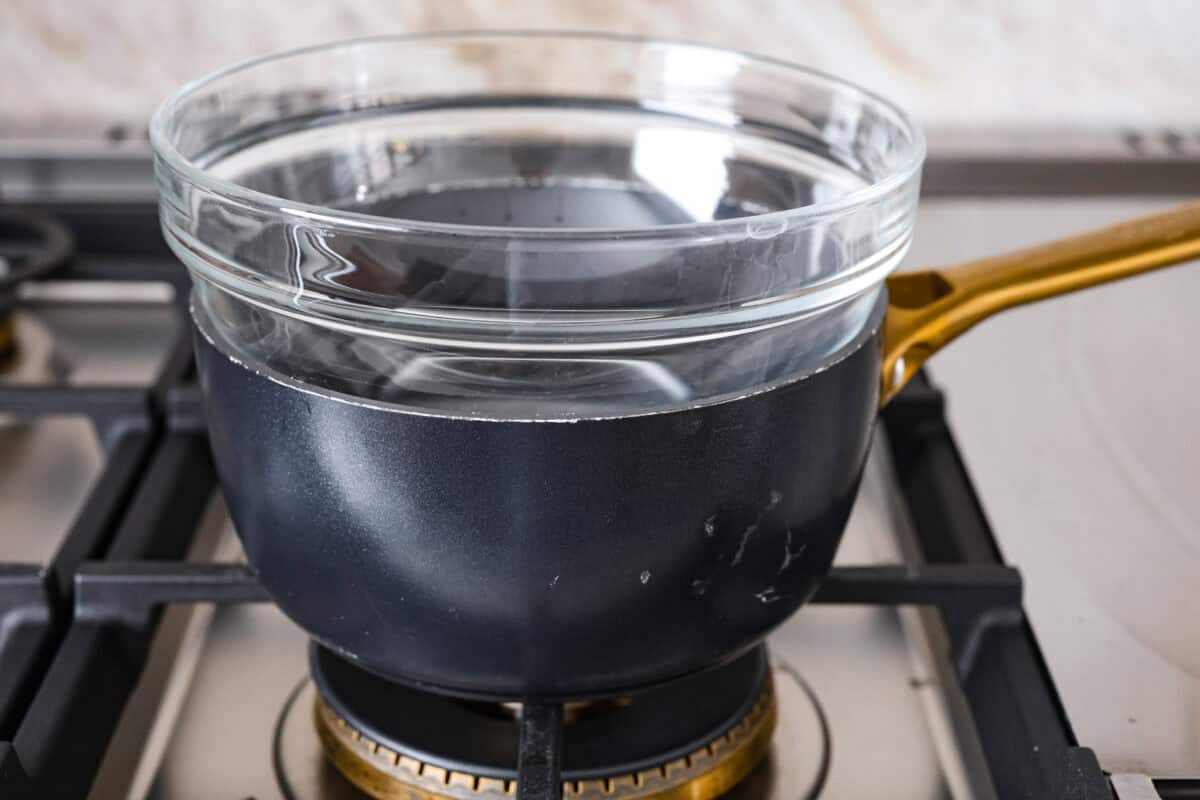
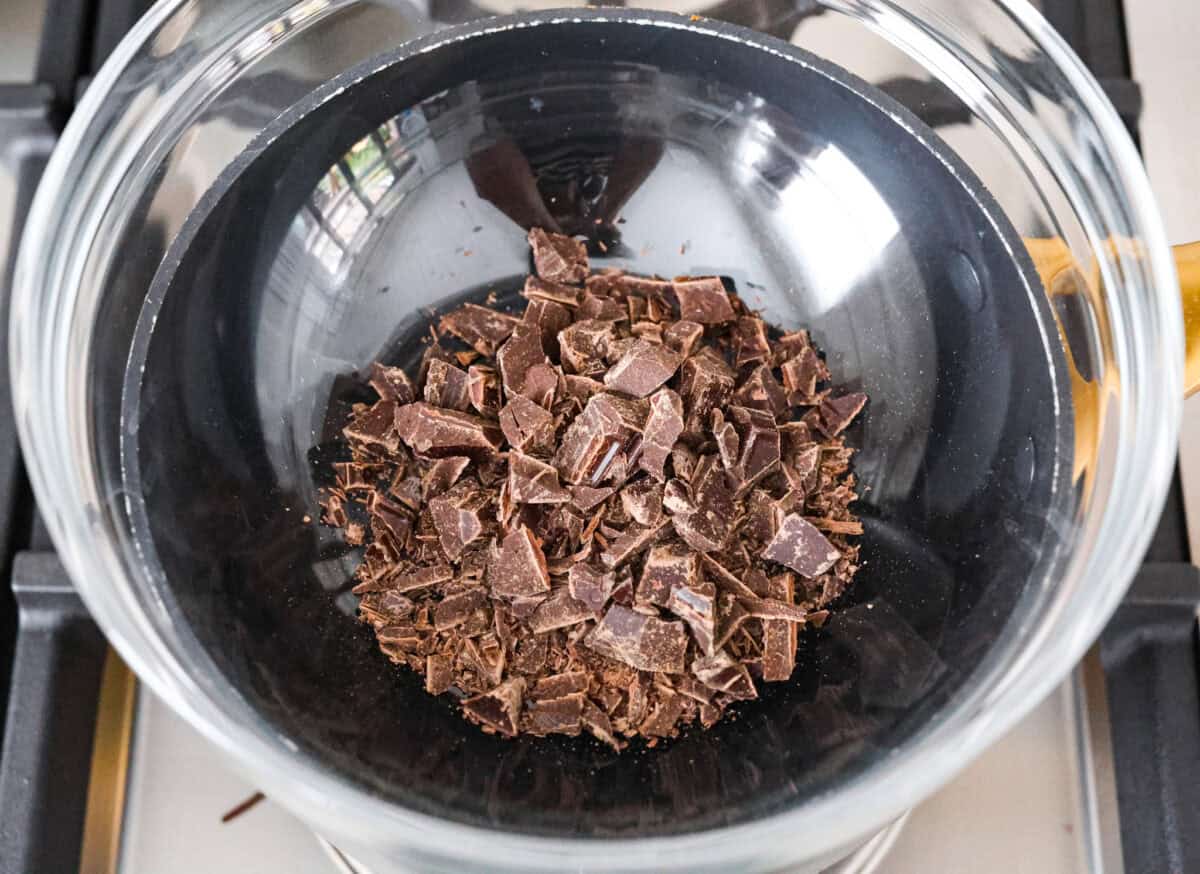
What Kind of Chocolate Can I Temper?
Use chocolate that doesn’t have any added stabilizers and has enough cocoa butter in it since tempering is the stabilization of cocoa butter.
- Use High-Quality Chocolate: The best chocolate for tempering is high-quality chocolate with higher cocoa butter content. Some good brands to look for are Couverture, Callebaut, and Guittard.
- Avoid Chocolate Chips: Chocolate chips are made with less cocoa butter to prevent them from melting easily. If you attempt to temper chocolate using chocolate chips, you will most likely end up with streaks in it due to the lower cocoa butter content.
- Avoid Candy Melts, Coating Chocolate, and Almond Bark: These kinds of chocolate have added stabilizers to help them set up and look shiny, but are ineffective for tempering. Because they don’t require tempering they are a great option when you want a quick, simple way to melt chocolate for dipping or drizzling.
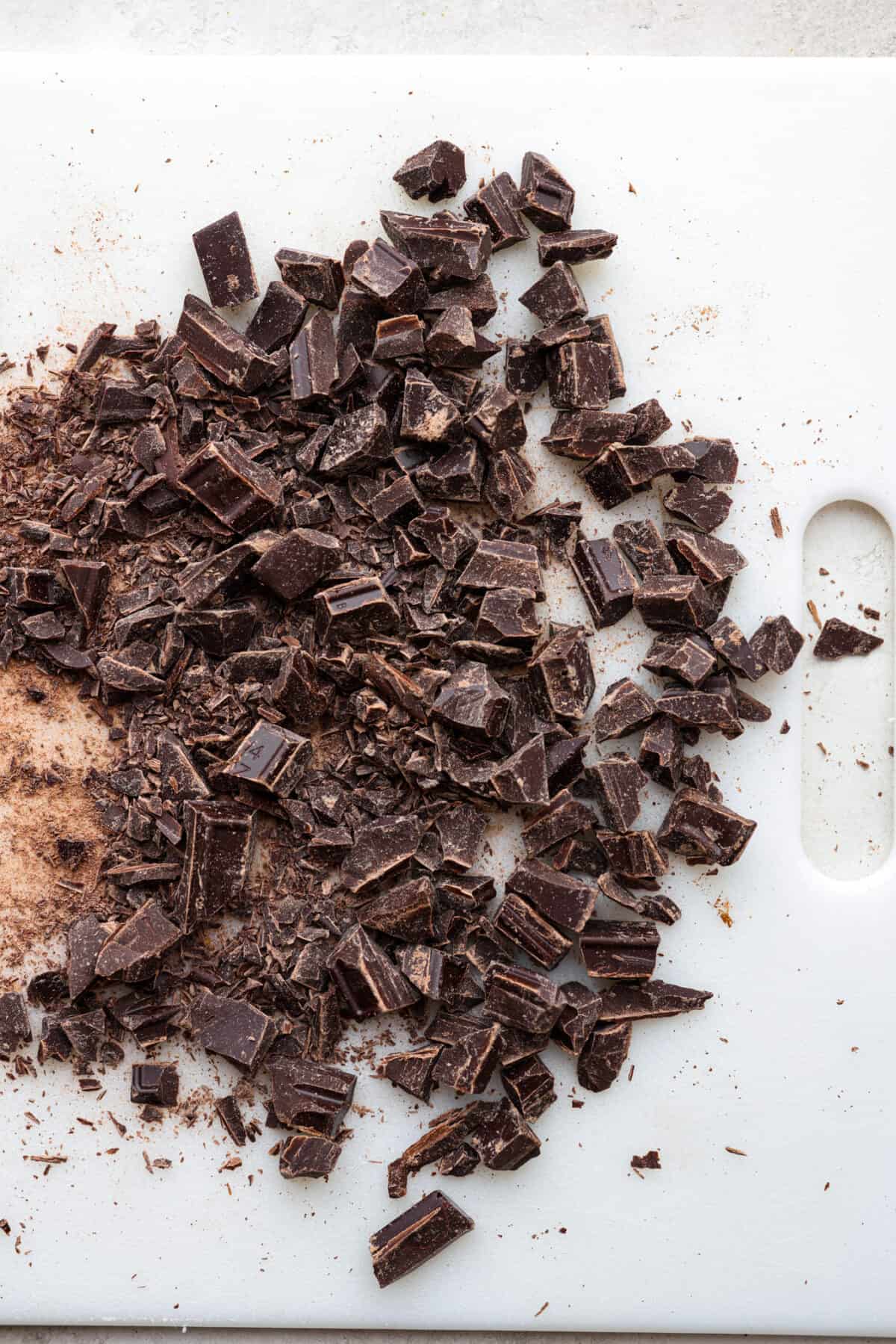
Tips For Tempering
Here are lots of helpful tips to make sure your tempering is a success! I go over EVERYTHING!
- Use a Metal or Glass Bowl: Plastic and ceramic bowls will not work for tempering chocolate. Metal bowls cool the chocolate faster, which requires you to work more quickly to keep the chocolate from heating or cooling too fast. Glass bowls will retain the heat longer and extend the cooling process. The chocolate will also stay in temper for longer.
- Bowl Size: The bowl should be large enough to cover the top of the pot and sit on top of it, but not too large that it doesn’t sit well on top of it.
- Water Tip: Use about 1 inch of water when using the double boiler method. The bottom of the bowl should not touch the water in the pot!
- Low Heat: Heat the water over very, very low heat. You want it steaming, but not simmering. The lower the heat, the more control you have over how quickly your chocolate will rise in temperature.
- Keep it Moving: Keep the chocolate moving! Agitating the bowl and constant stirring will help keep the chocolate more even in temperature.
- Patience: Patience is key when tempering chocolate. It can take several tries before it’s correctly tempered. Each step can take time to go through all the temperature changes, especially the cooling process. Babysit your chocolate closely, stir it frequently, and be patient.
- Seeding Tips: If you are using the seeding method, it’s important to note that the chocolate used to seed must be already in temper! You should use commercially bought chocolate that is still in temper, or if you are confident in your tempering skills you may use chocolate you have previously tempered and let fully cool and harden.
- Microwave Tips: If you use the microwave to melt your chocolate, set the microwave to 50% power and heat in 20-30 second increments, stirring thoroughly and temping between each increment so you don’t scorch the chocolate.
What to AVOID When Tempering Chocolate?
There are things to avoid when working with chocolate! Remember these and you’re on your way to successful tempering.
- HIGH HEAT: Heat is important for melting chocolate, but it has to be controlled by keeping it very low. Chocolate is prone to scorching easily. Monitor the chocolate’s temperature closely to make sure it doesn’t overheat and burn. Use a thermometer to check the temperature! See my chart below for the correct temperatures.
- WATER: Water and chocolate do NOT mix well. Even one drop of water can make an entire bowl seize up. Use a kitchen towel or paper towel to wipe the bottom of the bowl dry each time it comes off the double boiler. This will help eliminate the possibility of water getting into the chocolate.
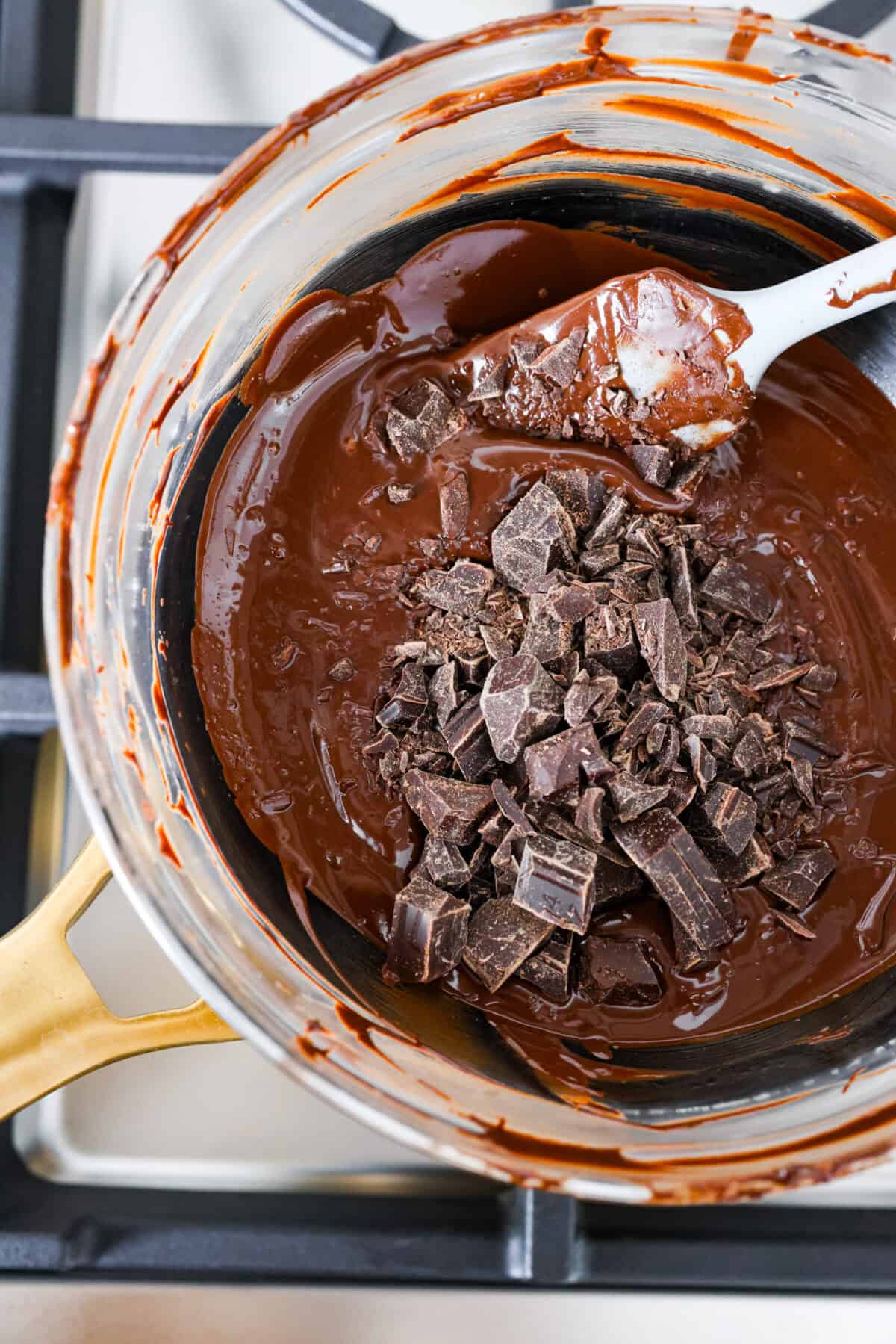
How Do I Know If I Tempered My Chocolate Correctly?
Here are some simple ways to know if you tempered your chocolate correctly.
- Parchment Paper: Use a spoon to drop a small dollop of chocolate or a smear of it onto a piece of parchment paper and let it set up.
- Dip a Spoon or Knife: Dip a spoon or the tip of a knife in the chocolate and set it aside to set up.
- Refrigerator: You can place these in the refrigerator for no longer than 2-3 minutes to help the chocolate set up more quickly.
- Smooth, Shiny, and Snaps: Tempered chocolate will set up quickly and will look very shiny and smooth. When you break it apart, it will have a clean snap. The chocolate should not look dull or be soft.
- No Streaks or Spots: If the chocolate has streaks, spots, or takes longer than 5 minutes to set then it is not in temper. You will have to start over!
Storing Tempered Chocolate
Place tempered chocolate in an airtight container or Ziplock bag. The best place to store chocolate is in a cool, dry place like a cupboard. Avoid storing it in places with heat, moisture, and light. Remember, temperature changes affect the chocolate and will cause the chocolate to “bloom!”
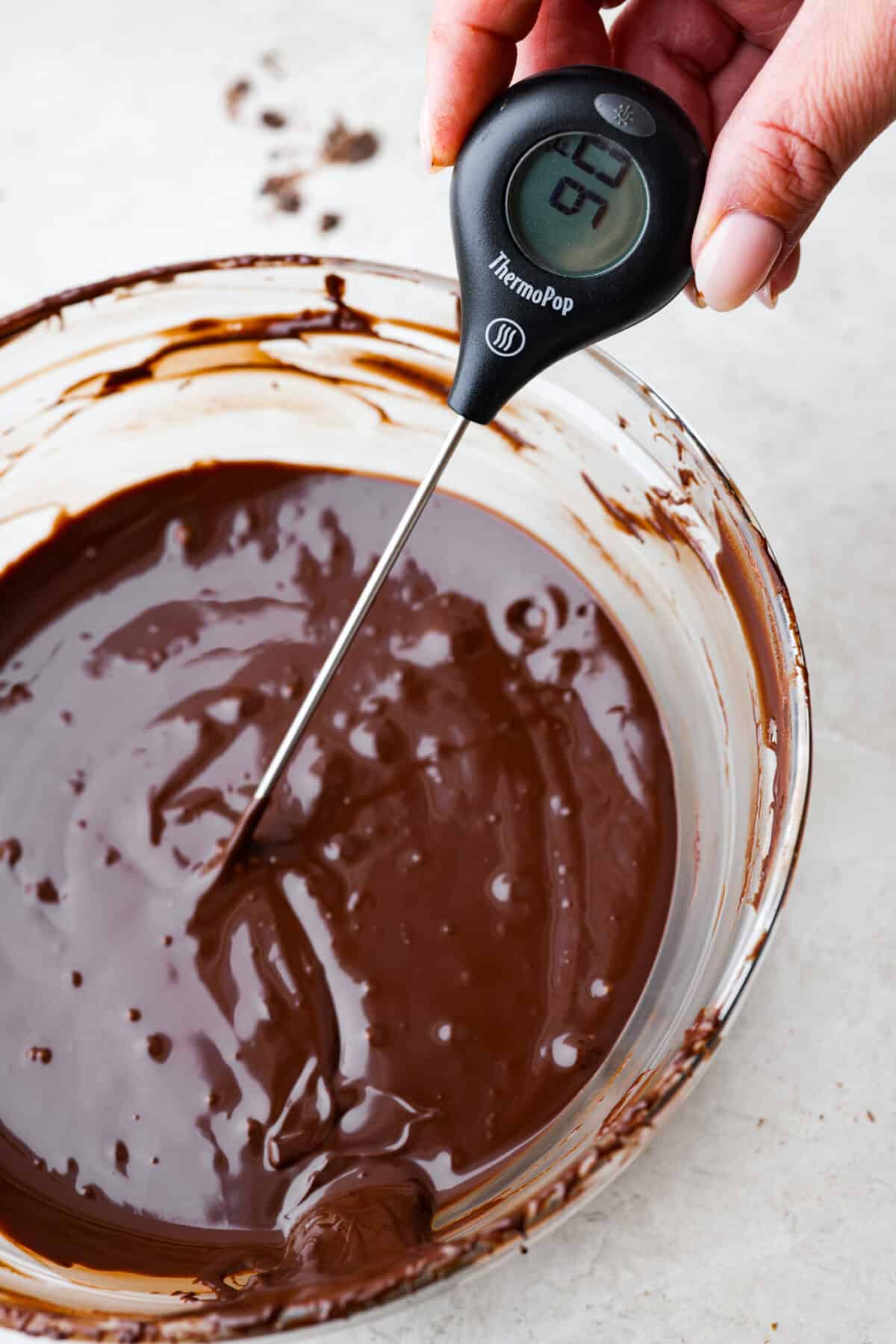
Chocolate Dipping Recipes to Love!
from The Recipe Critic https://ift.tt/5vqSdiG
via IFTTT

